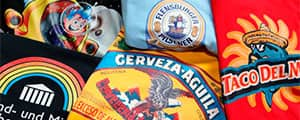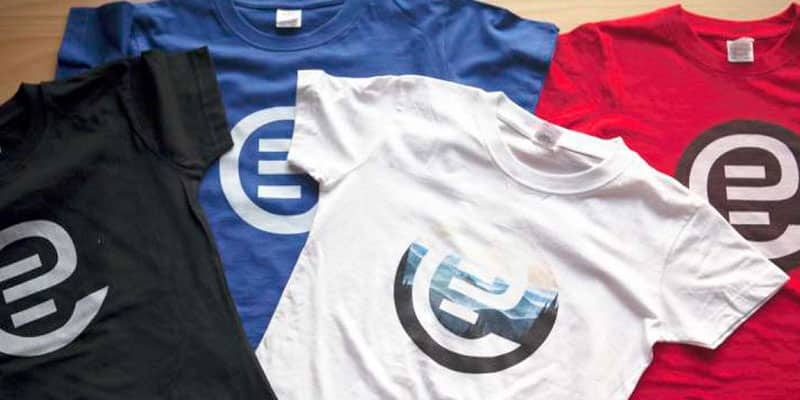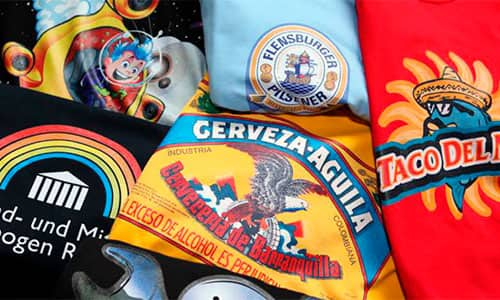
-
CUSTOMER
Andreas Golla, Golla GmbH -
LOCATION
Zwickau, Germany -
INDUSTRY
Textile printing and custom decoration -
PRODUCT
CorelDRAW Graphics Suite
Printing onto fabrics can be a challenge: the colours don't always come out right and if the quality of the artwork is not adequate, you end up with blurry or pixelated images. Mistakes such as these can be costly, wasting stock and time as well as leaving disappointed clients in their wake. For textile printer Andreas Golla who specialises in short runs and fast turnarounds, it has to be done right first time, every time and he's relying on CorelDRAW Graphics Suite to do just that.
From sceptic to devotee
“I first came across CorelDRAW through DecoNetwork, which is an e-commerce business management system designed specifically for the promotional products industry.
DecoNetwork's on-line designer is powered by CorelDRAW and enables customers to upload their artwork, adjust the size and colours and preview their design on a product before it goes into production,” explains Andreas.
“Having previously worked on Mac, I was sceptical about switching to a PC and using CorelDRAW, I perceived it as a product for amateurs. I was quickly won over and today CorelDRAW is the hub for all our pre-production workflow – both direct-to-screen printing and embroidery design.”
DecoNetwork and CorelDRAW have enabled us to harness the power of digital business, providing the freedom to develop new online sales channels and create future growth
Andreas taught himself how to use the graphic design software by watching Corel's tutorial videos on YouTube.
More versatility with vectors
Pixel-based software requires the artwork to be created at the size at which it will be printed. This can pose challenges when images need to be scaled to accommodate different garments and sizes, as they can pixelate. Embroidery presents different challenges, especially if the borders of the artwork are indistinct or the design very complex.
CorelDRAW converts images to vector files, which can be scaled and manipulated without losing quality. It's also easier to make the edges of artwork cleaner and clearer which can help translate a design into stitches and improve production quality.
Just a few clicks and you're ready to print
A typical order for Andreas' company, Golla GmbH, may come from a local band or artists, who often want small runs of around 50 t-shirts, with three different designs printed onto differentcoloured fabrics. Limited budgets and tight schedules require the agility and flexibility to process multiple small orders daily. Digital printing makes this a viable and niche business, as Andreas is able to expose the screens in just three minutes after hitting the print button in CorelDRAW.
On-demand, direct-to-screen printing has numerous benefits: Andreas can turn work around much more quickly, it's also environmentally friendly because it doesn't require any harmful chemicals or rinsing and there is no risk in having to hold large quantities of stock.
Simulated colour separation and previews prevent printing disasters
CorelDRAW and the Simple Seps plug-in simulate process colour separation as well as raster spot colour separation. It is also possible to turn off the colour spaces in the artwork so that the original design can be reviewed.
“With most graphic design software, you have to separate the colours and send the file through a Raster Image Processor (RIP). Then you print the films, expose the screens and it's only at this stage that can you see whether something has gone wrong – when it's too late. CorelDRAW lets you preview the job, so you can check colours and inspect the artwork before it is printed. In my experience, it's provided perfect output every time, with fewer steps required to reach the final goal,” says Andreas.

Opening doors to new business opportunities
The ability to do business online has given companies such as Golla GmbH the potential to grow their market and be more productive with fewer resources. Using the DecoNetwork system as the backbone of his e-commerce site, Andreas' customers can select a product from a catalogue, get a quote and place their order.
Once they've uploaded their artwork, they can view a mock-up of the job, see how the design will look on different coloured backgrounds and decide which sizes are required - the entire process is automated. This business model has given rise to a new venture which Andreas will be pursuing to help charities, schools and artists launch their own crowd-funding and fund-raising T-shirt campaigns.
